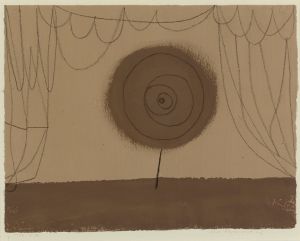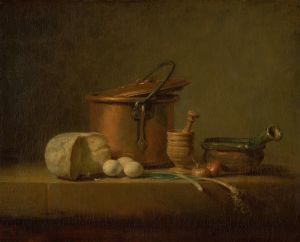
Black, still in place
A hand-painted replica of Paul Klee’s masterpiece Black, still in place, meticulously crafted by professional artists to capture the true essence of the original. Each piece is created with museum-quality canvas and rare mineral pigments, carefully painted by experienced artists with delicate brushstrokes and rich, layered colors to perfectly recreate the texture of the original artwork. Unlike machine-printed reproductions, this hand-painted version brings the painting to life, infused with the artist’s emotions and skill in every stroke. Whether for personal collection or home decoration, it instantly elevates the artistic atmosphere of any space.
Paul Klee, a Swiss-born artist, is renowned for his highly individual style that was influenced by movements in art that included Expressionism, Cubism, and Surrealism. One of his works, "Black, still in place," is a testament to his unique approach to art, characterized by his use of color and form.
"Black, still in place" was created during a period when Klee was deeply engaged with exploring the interplay between color and structure. Klee's work often defies easy categorization, and this painting is no exception. It reflects his interest in the abstract and the symbolic, which were central themes throughout his career. Klee's art is known for its whimsical yet profound nature, often incorporating elements of fantasy and dreams.
The painting itself is an exploration of the color black, which Klee uses not merely as a color but as a concept. In his works, black often represents a grounding force or a point of stillness amidst chaos. This piece exemplifies Klee's ability to convey complex ideas through simple forms and colors. The title, "Black, still in place," suggests a focus on the stability and permanence of black within the composition, inviting viewers to contemplate the role of this color in the broader context of the painting.
Klee's technique often involved layering colors and using a variety of materials to achieve a textured effect. His background in music also influenced his approach to art, as he often compared the use of color to musical harmony. This synesthetic approach allowed him to create works that resonate on multiple sensory levels.
Throughout his career, Klee was associated with the Bauhaus school, where he taught alongside other prominent artists such as Wassily Kandinsky. His time at the Bauhaus was marked by a deepening of his theoretical understanding of art, which he applied to both his teaching and his own work. "Black, still in place" can be seen as a reflection of the principles he developed during this period, emphasizing the balance between form and color.
Klee's work has been influential in the development of modern art, and his paintings are held in high regard for their innovative use of color and form. "Black, still in place" is a part of this legacy, showcasing his ability to blend abstraction with a sense of narrative and emotion. His art continues to be studied and appreciated for its depth and complexity, offering insights into the mind of an artist who was constantly pushing the boundaries of what art could be.
In summary, "Black, still in place" by Paul Klee is a significant work that encapsulates the artist's exploration of color, form, and symbolism. It stands as a testament to Klee's unique vision and his contribution to the world of modern art.


















